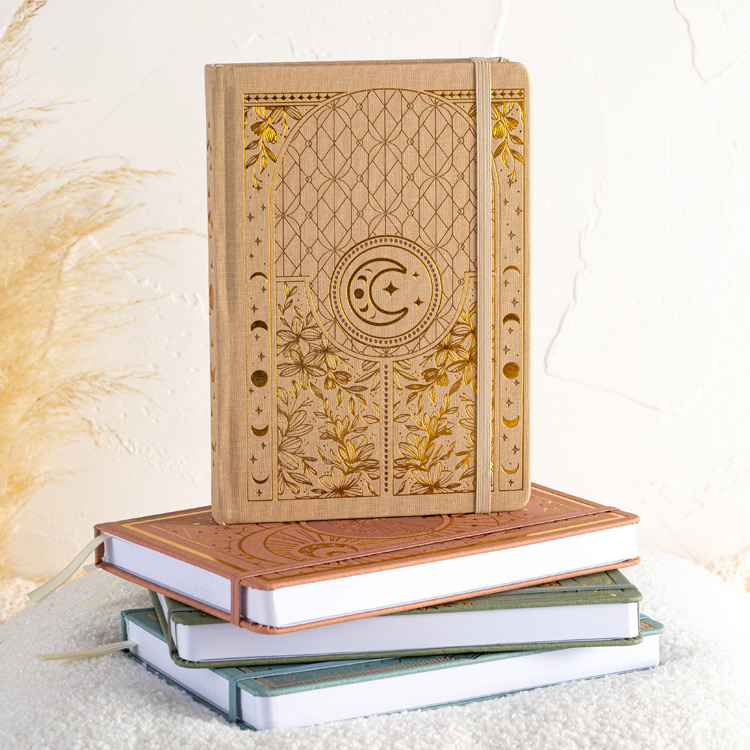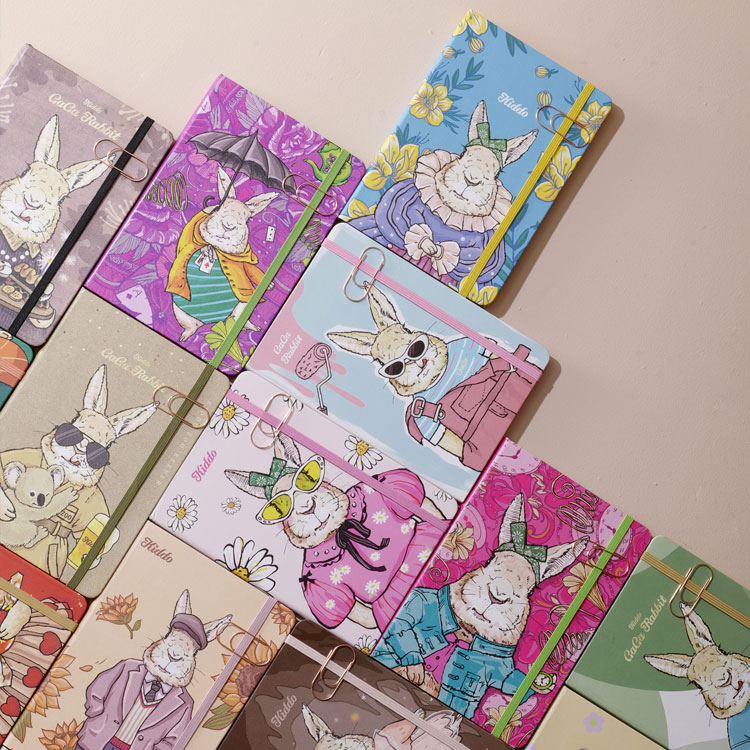All of which can depend on the kind of paper you are using, as paper weight helps to determine how good a print job will be, and how long the printed piece will last. Precise regulation of printing conditions like temperature and humidity also guarantees repeatability and high quality of the product.
The Relationship Between Paper Weight and Printing Quality
Impact of Paper Weight on Ink Absorption
Typically, heavier papers, those found in premium notebooks or art print, may absorb ink differently than lighter options. Thicker paper has a more compact fiber structure; therefore, there is less possibility of ink seepage to the other side and good print quality becomes sharp and bright. This is essential when printing at a high resolution or using strong colors. For example, the coated papers that are used in professional-grade notebooks are meant to absorb less ink into the fibres so that you get sharp text and bright images.
Texture and Finish Variations by Paper Weight
The weight of paper also plays a role in its texture and finish. Denser papers tend to have a smoother surface, making them a good choice for projects that require fine detail or photos. In contrast, lighter papers might be more textured for sketching or basic note-taking.
Optimal Paper Weights for High-Quality Printing Results
This is a great tip for quality printing: choosing the right paper weight. Brochures or high-quality flyers will benefit strongly from 120 – 160 gsm papers as they are thick and make the brochure feel professional. Lightweight papers (especially those under 200 gsm) are more suited towards sketches and such, while art prints or photography are best on heavier weights (200-300 gsm), as these can retain fine detail without buckling.
Paper Weight and Its Role in Durability
Resistance to Wear and Tear Based on Paper Weight
As they are durable, paper weight also relates to the durability. For example, business cards printed on the 300 gsm stock, which not only feels luxe but also holds up to the rigours of everyday use for the most part with no frayed edges or creases whatsoever.
Thinner papers are inexpensive, but do not stand up to as much handling. They excel for one-time use cases such as flyers or internal memos, where longevity is not the main concern.
Long-Term Preservation of Printed Materials
The heavier weight is coupled with acid-free materials for archival or long-term use. To promote sustainability as well as durability, LABON has integrated eco-friendly materials into its products. They offer stone paper and 100% cotton paper, which is resistant to yellowing, ensuring the longevity of printed content.
Recommendations for Durable Applications Using LABON Products
In notebooks where durability is important – like in diaries or professional portfolios – choose LABON's hard notebook series using materials such as PU leather covers combined with strong inner pages. Thus, such products not only appear elegant but also have long-lasting durability for daily use.
Matching Paper Weights to Specific Printing Needs
Choosing the Right Paper Weight for Marketing Materials
While aesthetics are important for marketing materials, they should also be practical. A brochure printed on 150–200 gsm paper is precise; it gives just the right amount of thickness to highlight the point of quality without being impossibly stiff. Postcards, likewise, enjoy the weight of even heavier stocks (250–300 gsm, to be exact) to keep their form throughout the journey of postal mailing.

Selecting Suitable Paper Weights for Art Prints and Photography
Art prints require the highest quality and color reproduction that only thick paper can deliver. When you frame different kinds of artwork or photographs, these weights form a solid yet stable base to fatten out any distortions whilst also providing eye candy.
Advantages of Using LABON Products for Different Paper Weights
Consistency in Quality Across All LABON Paper Options
Only high quality and uniformity of paper products matter for selection, directly impacting performance and reliability of the product in the final stage because of the manufacturing processes and material selection.
This philosophy is perfectly showcased by LABON, a company that has been around for over two decades, which makes available numerous types of paper that have the same standards of uniformity in quality, regardless of the different weights.
The range includes normal wood pulp paper, stone paper, coated paper, watercolor paper and cotton paper, carefully designed for different usages, superlative in both strength and aesthetics.
Eco-Friendly Choices in Various Weights from LABON
In today's manufacturing world, sustainability has become a major focus. LABON implements eco-friendly practices as part of its production processes to respond to international trends of green solutions. You can see their dedication towards this with the selection of materials like stone, paper and cardboard made from wood pulp paper.
By choosing LABON's eco-conscious products, you contribute to reducing your ecological footprint while enjoying high-quality materials tailored to various applications.
Customizing Paper Weight for Industry-Specific Applications
Customization is the key to fitting various sectors with different needs. Whether you are in publishing, marketing, or fine arts, using the right paper weight can make a difference in how practical and fashionable your project is supposed to be.
LABON offers extensive customization services that allow you to tailor your order according to specific needs. For example:
Marketing Materials: Brochures or flyers printed on 150-200 gsm paper strike the perfect balance between sturdiness and cost-efficiency.
Art Prints: Heavier weights like 200-300 gsm watercolor or cotton papers are ideal for capturing intricate details in artwork or photography.
Corporate Use: Professional portfolios or diaries benefit from robust inner pages paired with premium covers such as PU leather.
These customizable options ensure that your materials not only meet industry standards but also stand out for their quality and design.
FAQs
Q1: Why is stone paper environmentally friendly?
A: Stone paper is made from calcium carbonate as opposed to wood pulp, so it's a more sustainable choice that is less destructive to forests and provides good durability
Q2: How does LABON achieve the same standard on different weights?
A: LABON creates the same level of quality products in all product lines using modern standard quality production equipment and quality control operations.
Q3: Does LABON have customization for cover materials and inner pages?
A: Indeed, LABON offers myriad opportunities for cover materials such as PU leather or linen and types and weights of inner pages that are custom-tailored to suit your needs

